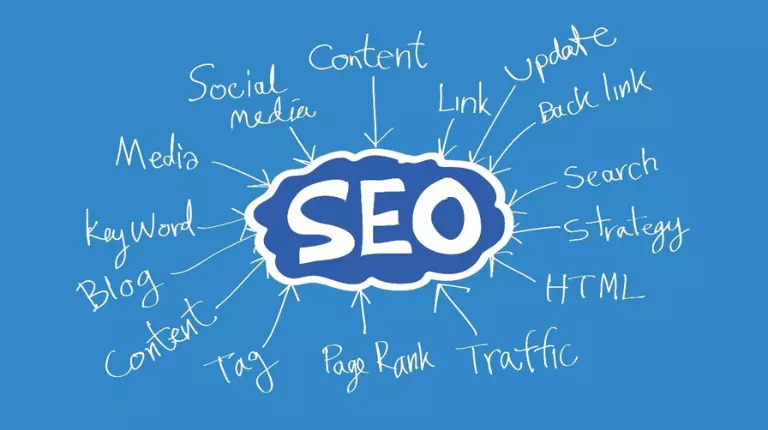If blogging is not part of your healthcare marketing campaign, you’re sorely missing out. Blogging is one of the oldest digital marketing tools, so it’s not surprising that many people think it’s outdated and irrelevant – this notion couldn’t be more wrong. According to HubSpot’s The State of Marketing 2023 report, blogging provides the highest ROI of any marketing channel, alongside social media shopping tools and influencer marketing.
Today, we will discuss how to optimize your healthcare blog to engage patients, build trust, and improve SEO.
Deciding What To Write About
For a healthcare organization looking to create relevant blog content, the key lies in understanding your audience’s needs and your medical expertise. Start by identifying the core patient demographic and their everyday health concerns. This can be achieved through patient surveys, feedback forms, and analyzing frequently asked questions during appointments.
Next, consider what you can offer to the healthcare table. A cardiology clinic might focus on heart health tips, while a pediatric practice could provide advice for new parents. It makes sense; you should align your content with what you can authoritatively speak about.
Let’s consider a hypothetical example.
We have a practice called Community Health Center, a general healthcare clinic in Springfield that primarily serves families and working adults in the Springfield area. Here are some ways they can identify topics about workplace stress:
- Patient interactions and feedback: The clinic’s doctors and nurses frequently receive questions about managing stress and anxiety, especially from working adults.
- Clinic’s expertise: The clinic has several professionals specializing in mental health and general healthcare services.
- Online tools: Using Google Trends, the clinic discovers that searches for “stress management techniques” and “anxiety relief at home” have increased locally.
- Community Health Trends: Springfield has recently seen a rise in workplace stress due to economic changes.
This is a valid and timely topic that is informative and directly relevant to its audience’s needs. In this case, the organization can write a post about “5 Effective Stress Management Techniques for Busy Lives,” which includes practical tips for managing stress and incorporates advice from the clinic’s mental health specialists.
Keyword Research with a Healthcare Focus
Effective keyword research in healthcare blogging requires a nuanced approach. Start by combining common healthcare terms with issues relevant to your audience. This may include combining general terms like “healthcare” with more specific concerns such as “managing chronic pain” or “pediatric vaccinations.”
Of course, you’ll want to use tools like Google Keyword Planner, Ahrefs, and SEMRush to identify frequently searched terms that are not overly saturated at the same time. Remember, the goal is to balance popular search terms and those specific enough to attract a targeted audience. After all, you don’t want to target overly competitive keywords where you have a minuscule chance of ranking.
Also, don’t forget about the valuable local keywords if you’re serving a local community. When optimizing the content for local search, leverage keywords that reflect the healthcare needs and search trends specific to the area. For instance, if you run a clinic in Miami, it is best to use keywords like “allergy treatment in Miami” or “Miami pediatric care.” This approach can help you narrow down the competition and ensure your content is highly relevant to the local population.
Blog Titles Matter
As the first thing your patients read in your blog, your post title needs some extra attention. A well-crafted title can make the difference between a reader clicking on your post or scrolling past it. Below are some rapid-fire tips to optimize your title in SEO healthcare blogging:
- Use Relevant Keywords: Identify primary keywords related to your blog’s content. For instance, if you’re writing about mental health, include phrases like “anxiety relief” or “mental wellness tips.”
- Be Clear and Concise: Ensure the title indicates the blog’s subject clearly. Avoid overly complex or vague titles.
- Include Local Terms if Applicable: If targeting a local audience, include geo-optimized keywords, like “Diabetes Care in Atlanta” or “Early Intervention ABA Seattle.”
- Pose a Question or Solve a Problem: Titles that ask a question or offer a solution tend to attract more clicks, like “How Can Diet Improve Heart Health?”
- Keep It Engaging: Make the title interesting and engaging to encourage clicks without resorting to clickbait tactics. Avoid sensationalized titles like “Doctors Hate This One Simple Trick to Cure Diabetes Overnight!”
- Optimize for Length: The ideal title length is around 50-60 characters to ensure it displays well in search results.
- Use Action Words: Titles with verbs can be more engaging, like “Managing Chronic Pain: Effective Strategies.”
ProTip: Use CoSchedule’s Headline Analyzer to craft titles that grab the audience’s attention.
Reader Experience is Paramount
Even blogs with top-tier content won’t succeed if the reader experience is poor. People won’t have qualms about leaving your blog if things like readability and formatting are nowhere to be found. As such, when blogging, aim to make it straightforward, thoroughly covering your subject, and ensure it’s up-to-date with the latest information and trends. This approach helps make your writing accessible and reliable for many readers.
Follow the steps below to optimize your healthcare blog for the best reader experiences:
- User-Friendly Layout: Your healthcare blog should be easy to navigate with a clean, intuitive design. This improves user engagement and dwell time – all positive signals for SEO.
- High-Quality Content: Provide valuable, accurate, and well-researched information. Engaging content encourages longer reading times and return visits. Accurate and timely content builds trust and credibility for your brand.
- Fast Loading Speeds: Optimize images and streamline your site’s code to ensure quick loading times. Slow websites will only push readers to leave.
- Mobile Responsiveness: Ensure your blog is mobile-friendly, as a significant portion of users access content via mobile devices – more than half of worldwide traffic, actually.
- Readable Content: Use short paragraphs, bullet points, and subheadings to break up text, making it easier to read and scan.
- Internal Linking: Use internal links to guide readers to related content on your site, increasing page views and time spent on your site (and giving you more chances to drive them into your conversion funnels).
Over 40% of healthcare organizations don’t blog because they don’t have the time. If you need help with healthcare blogging, Cardinal Healthcare Marketing Agency is more than happy to help.


